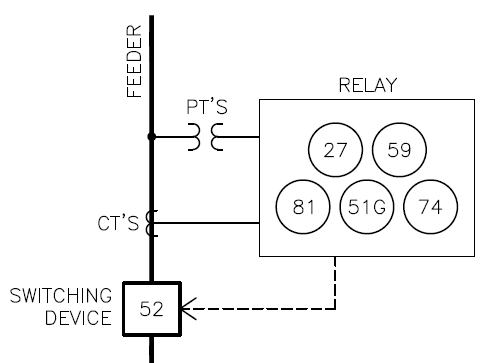Intro to Relays #2 - ANSI/IEEE Relay Numbers
Protective relays are a complex but essential part of electrical engineering, especially in solar and energy storage systems. While they can seem intimidating at first, they don’t have to be! This three-part series is designed to help non-engineers in the renewable energy field understand the basics of protective relaying.
**Intro to Relays #1 – What Are Relays, CTs, and PTs?**
**Intro to Relays #2 – ANSI/IEEE Relay Device Numbers (see below on this page)**
**Intro to Relays #3 – What Does SEL Stand For?**
---
### **Understanding Relay Numbers**
Protective relays use standardized device numbers to describe their functions. Instead of using long descriptions, engineers rely on these numbers for clarity and efficiency. These standards are defined in the ANSI/IEEE C37.2 document.
### **Why Use Numbers Instead of Words?**
1. **Efficiency**: Numbers make communication faster and more precise. Instead of saying “Overvoltage on the neutral,†you can simply say “59N.â€
2. **Standardization**: Everyone in the industry—engineers, utilities, vendors, and installers—understands these numbers, reducing the risk of confusion.
3. **Space-Saving**: On schematics, using numbers makes diagrams cleaner and easier to read, especially when relays handle multiple functions.
For example, instead of writing out “phase overvoltage, undervoltage, overfrequency, underfrequency, ground inverse time overcurrent, and alarm,†you can just label it with the corresponding relay numbers.

---
### **Attention Engineers!**
If you enjoy technical content like this, you might be a great fit for Pure Power. Our team of 80 engineers has designed over 2,000 C&I and utility-scale solar projects. Working alongside such experienced professionals is a fantastic way to grow your career.
Check out our open positions today!
---
### **Common Relay Functions in Solar and Energy Storage**
Here are the most frequently used relay functions in photovoltaic and energy storage systems:
| # | Name | Description |
|---|-------------------------|-------------|
| 25 | Synchronizing Clock | Compares voltage, frequency, and phase angle between the grid and solar system. Allows parallel connection if matching. |
| 27 | Undervoltage | Triggers when voltage drops below a set threshold. |
| 32 | Directional Power | Detects power flow in a specific direction (reverse power). |
| 49 | Transformer Thermal | Activates when transformer winding temperature exceeds a limit. |
| 50 | Instantaneous Overcurrent | Trips immediately when current exceeds a set value. |
| 51 | Inverse-Time Overcurrent | Trips after a set time if current remains above a threshold. |
| 52 | Circuit Breaker | Opens a circuit; 52R also allows reclosing. |
| 59 | Overvoltage | Triggers when voltage exceeds a set value. |
| 74 | Alarm | Triggers visual, audible, or data alarms. |
| 79 | AC Reclosing | Controls automatic reclosing of an AC circuit. |
| 81 | Frequency | Activates when frequency is outside acceptable limits. |
| 86 | Lockout | Prevents operation until manually reset. |
| 87 | Differential Protective | Trip based on current difference between two points. |
| 89 | Line Switch | Used with disconnect switches and accessories like shunt trips. |
---
### **Letters That Follow Relay Numbers**
Sometimes, letters are added to relay numbers to provide more detail:
| Letter | Function | Example |
|--------|----------|---------|
| R | Reclosing | 52R = Circuit breaker that can open and reclose. |
| P | Phase | Often assumed by default (e.g., 50 and 51 are phase-based). |
| N | Neutral | 51N = Monitors neutral for unbalanced overcurrent. |
| G | Ground | 51G = Monitors ground for faults. |
---
### **Setpoints: The Missing Piece**
Relay functions aren’t just about identifying what they do—they also need setpoints. These are thresholds set by engineers, and they vary depending on the project. Setpoints define when a relay should activate, making them critical for system safety and performance.
---
### **Conclusion**
At a high level, relay numbering is straightforward, but the details can quickly become complex. As a developer or project manager, you don’t need to know every technical nuance to succeed. That’s where experienced teams like Pure Power come in. If you need help with relays on your next project, reach out to us today—we’re here to help.
Guangdong Heidler Technology Co., Ltd , https://www.hyhemit.com